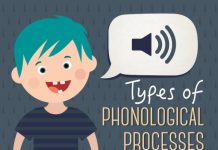Because hammertoes are commonly associated with high heels or long-term foot strain, few people associate them with children. However, your child may be genetically predisposed to hammertoes or may incur them as a result of injury, playing sports, ballet dancing or poorly fitting shoes.
A child may be self-conscious about her looks and may feel embarrassed because she can’t wear open-toed shoes around her friends. Take your child’s hammertoes seriously, even if they don’t cause her much pain, because this condition never goes away on its own.
Talk to a Doctor
If you suspect your child has hammertoes, schedule an appointment with a doctor. A specialist can explain what causes hammertoes and why your child may be affected, since the usual causes of high heels and unsupportive adult shoes typically associated with the condition probably don’t apply. He’ll also be able to tell you if the hammertoes are best treated with surgery or non-surgical pain management.
If the doctor recommends surgery, it won’t prove overly taxing for your child because it’s generally an outpatient surgery. However, your child’s age and his stage of development may delay any recommendation for surgery. It’s best to discuss all of your child’s options with a specialist at the earliest possible opportunity to discuss how it could impact her further development.
Pain Management
Your child’s specialist may recommend non-surgical pain management, depending on how pervasive your child’s hammertoe problems are. Options include:
- Taking regular or temporary medication
- Wearing supportive shoes
- Wrapping the toes in padding, especially when participating in physical activities
- Performing toe exercises
You might also take your child to a reflexologist for foot massages following a doctor’s visit. Regular toe exercises and massages can provide some relief from pain and discomfort and slow the progression of the condition.
Shoe Awareness
As you’ll learn once you speak to a doctor, the kinds of shoes your child wears can either cause hammertoes in the first place or can exacerbate pre-existing hammertoes. If your child is beginning to pick out her own shoes, it’s especially important to discuss the effect of inadequate shoe support.
Your child shouldn’t wear high heels even as a teen because her feet and ankles are still developing, but she also shouldn’t wear constrictive or otherwise ill-fitting shoes. Take your child for a proper shoe fitting on a regular basis to make sure she hasn’t outgrown her current shoes.
Surgical Treatment
Hammertoes don’t healon their own, so it’s possible your child’s doctor will recommend surgical treatment. Surgeries for hammertoes include:
- K-Wire: inserting a pin into the bent toe to straighten it, like a splint (the wire is eventually removed after the toe has straightened out)
- Wireless treatment: using an implant to straighten the toe (the implant doesn’t require removal)
- Nextradesis: an implant acts as a fusion of joints (leads to less discomfort during recovery time)
Depending on the type of procedure you and your child’s doctor choose, your child may be prohibited from participating in sports for a number of weeks while recuperating. She may even have difficulty walking for a few days, so plan the surgery during one of her breaks or she’ll probably have to take off school.
Don’t Wait and See
Hammertoes aren’t a “wait and see” type of condition. There’s no hope of recovery without doctor intervention, and your child will only make the condition worse if he continues to be an active, healthy child who engaged in physical activity regularly. Address the issue now before it gets worse.
Your child’s feet are still developing, even if she’s in her teens. How your child walks or how much strain she puts on her feet during physical activities like sports now could have an impact on the types of foot conditions she develops later in life. For example, Health Day reports one in 20 children walk primarily on their toes during their first few years of walking.
Continuous strain on the feet can lead to all sorts of injuries, including hammertoes. It’s best to meet with a specialist now if you have any concerns about your child’s foot pain and discomfort, even if he doesn’t yet have hammertoes, so his feet develop into the most healthy, supportive feet they can be.





